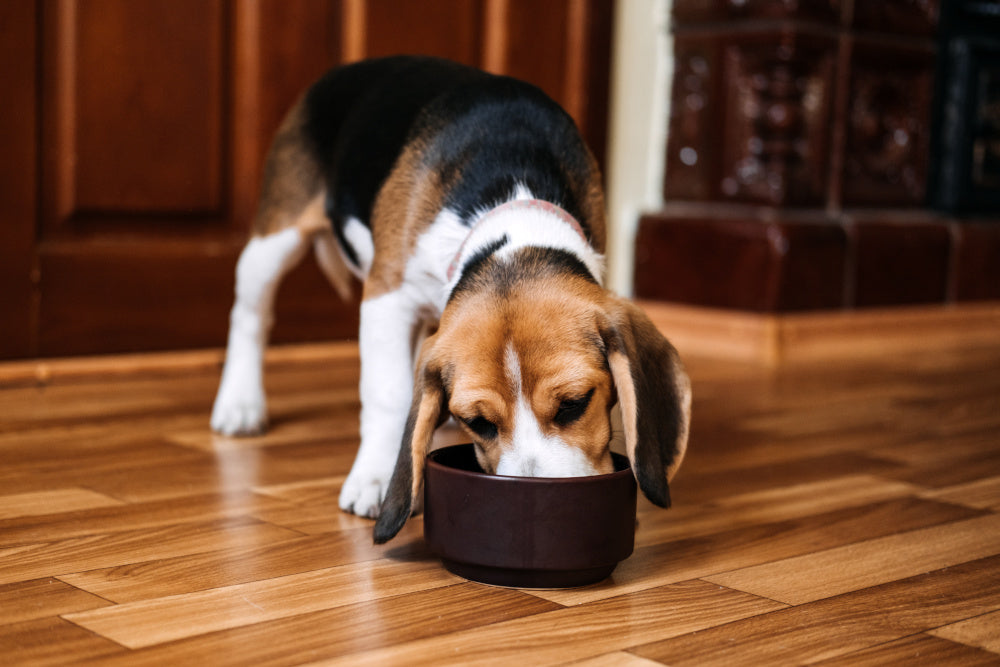We would love nothing more than for you to transition your fur baby from their current hard-to-digest, yawn worthy kibble to our all-natural, gut friendly, cold-pressed dog food. We offer three recipes –
lamb,
chicken, and
salmon – that we are sure your dog would appreciate. But we would also encourage you to make the transition slowly. Changing your dog's diet suddenly could create unnecessary problems.
We dog owners know that our pooches love to eat. Most of them love to try new things as well. But believe it or not, canines have sensitive digestive systems. It doesn't take much to upset things. That's exactly what could happen if you suddenly switched foods without allowing your pet a transition period.
Below is a general guide for pulling off a gradual transition. It should work well regardless of the diet you have chosen, including our cold-pressed dog food recipes for your furry friend.
First Stage – 75/25 Mixture
The first stage of the transition takes place over days 1 and 2. It may require a bit of math, but look at the feeding guidelines for both diets and give your dog 75% of the recommended amount of the current food and 25% of the recommended amount for the new food. Do not exceed the ratio even if your dog shows tremendous interest in the new product.
Introducing new food too quickly could make it more difficult for your dog's digestive system to adjust to the new ingredients. The end result could be an upset stomach or even diarrhea and vomiting. Regardless of the speed of transitioning, some dogs have a more sensitive tummy than others and will have some softer stools during the transitioning process. It is common for all dogs to experience more gas during the transition period even if their stools are still firm.
Second and Third Stages
The second and third stages call for gradually reducing the old food while increasing the new. Begin stage two on the third or fourth day, reducing the 75/25 mixture to a 50/50 mixture. Continue with this ratio for another day or so.
Stage three should be somewhere between days 5 and 7. Here is where you will decrease your dog's old food to 25% while increasing the new food to 75%. As long as your pet hasn't shown any
signs of digestive troubles, you are well on your way to completing the transition.
The Final Stage
Throughout the transition, you have probably been monitoring your dog for any signs of digestive discomfort. Assuming that your pet has tolerated the new food well, you can eliminate the old food altogether by the eighth or ninth day. In most cases, a dog will have fully transitioned to the new food by day ten. If your dog has an iron gut, you can speed up the transition process to fully transition within 7 days.
Please note that all dogs are different. Some don't handle transitions to new food so easily. As a result, food transitions have been known to take as long as 14 days. Just go slow and steady, monitoring your pet along the way.
Why Transitions Can Be Slow
Patience is definitely a virtue when transitioning a pet from one food to the next. But that begs the question of why some dogs are slower to transition than others? There are several thoughts on why this is, including digestive system adaptation. A dog's digestive tract gets accustomed to the ingredients in its food. Introducing a new food too quickly can overwhelm the animal's digestive system.Another issue is the microbiome balance in a dog's gut. Just as with humans, introducing new foods can change the balance. That could cause an upset stomach and other conditions. The issue should resolve itself, but it can take time.
Whether you want to switch your dog to Nextrition or another brand, be sure to talk to your vet about your plans. Switching food brands or types should be done slowly. A slow and steady approach is good for both your dog's health and your emotional wellbeing.





